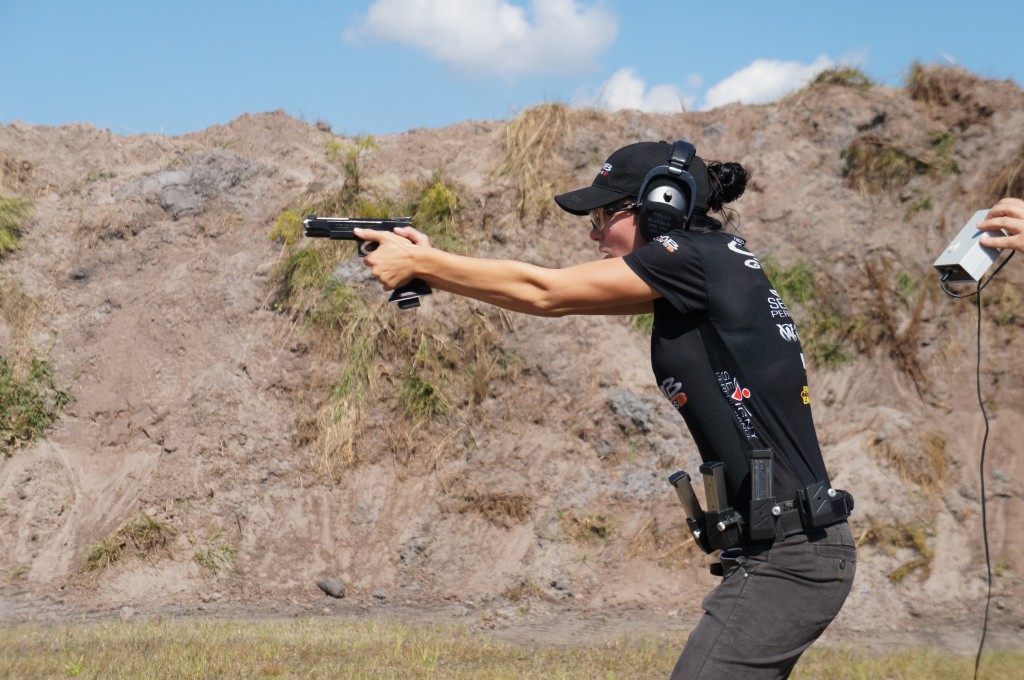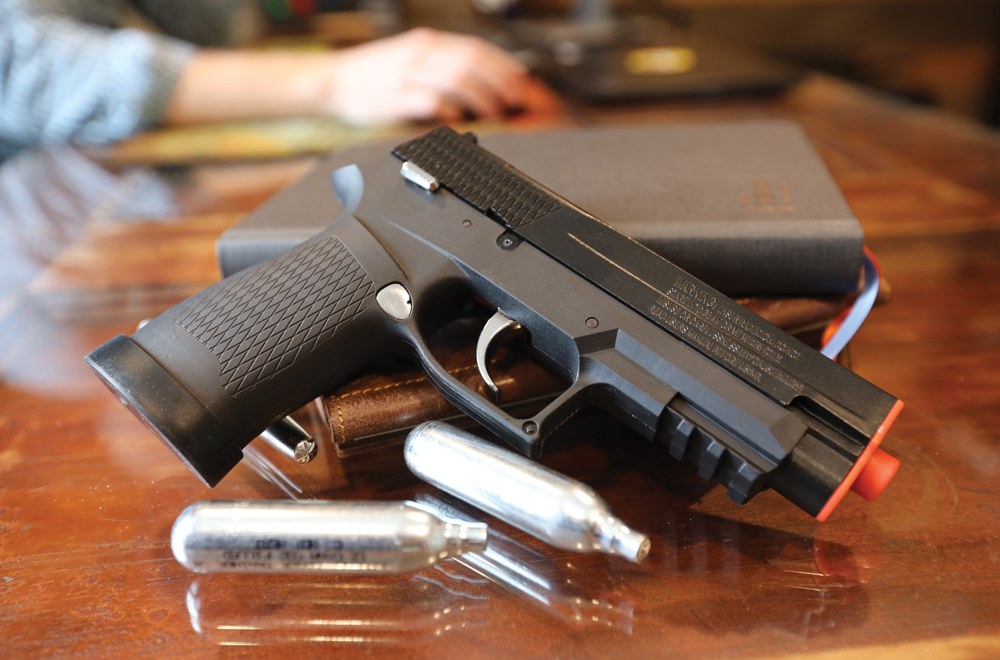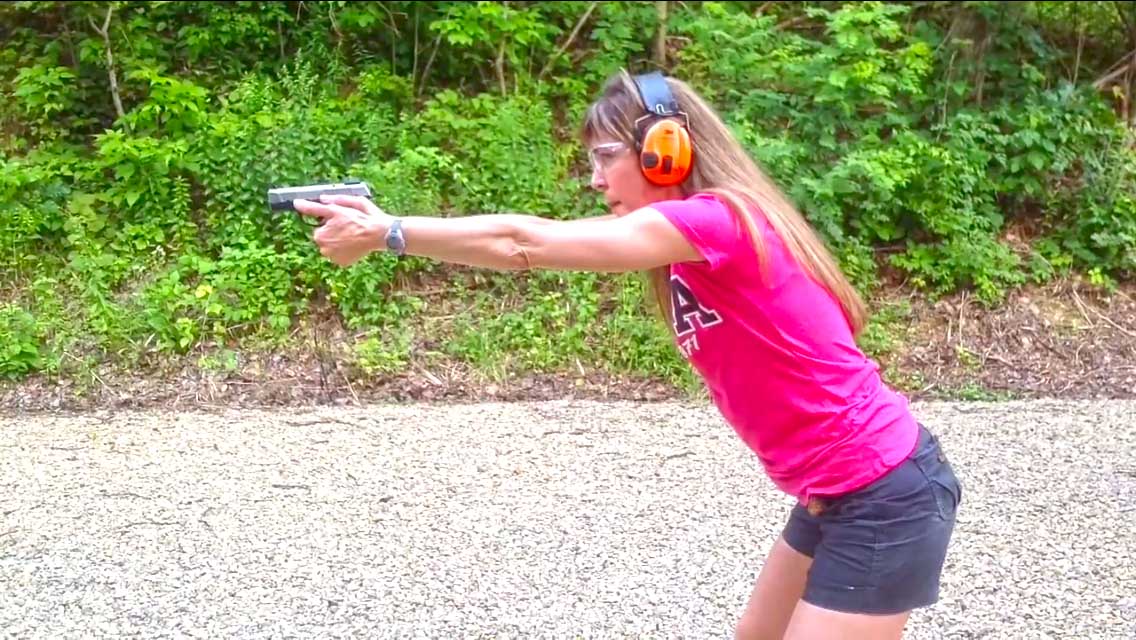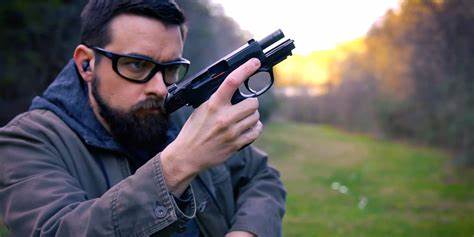Firearm Instructing - The Right Way to Hold Your Gun
There are a few things that should always be a priority when you’re handling a firearm, especially if you’re a beginner.
First, you’ll want to make sure that you have complete control over the weapon. Safety is more important than anything when you’re holding a gun. If you don’t feel as though you have the right grip or that a single shot could cause you to lose control, you’re not holding it the right way.
Second, it’s important to hold your firearm in such a way that won’t tire you out quickly. Whether you shoot as a hobby or for training, no one wants to tire out quickly after holding their gun for only a short period of time.
So, why is it that most firearm instructors tell you to push your weapon out as far as possible? In reality, it makes more sense to keep your moment arm shorter. This gives you more control and won’t cause fatigue, so you stay on your target longer.
Still confused? Let’s cover a few more tips about the right way to hold and prepare your firearm to shoot.
The Rules of Safety
Again, holding your firearm in a safe and secure matter should be your top priority. There are a few ways to make sure you’re always staying safe while the gun is in your possession, including:
- Imagining that it’s always loaded (even when it isn’t)
- Pointing it in a safe direction away from yourself and others
- Keeping your finger away from the trigger
- Understanding your surroundings
By keeping these ideas in mind, you’re more likely to hold your gun safely, whether you’re ready to shoot or not.
Using a Dominant Grip
You’re always going to shoot more accurately and have more control over your firearm when you use a two-hand grip. Start by holding the gun with your dominant hand, and place your other hand should move underneath it, just below the trigger guard with your last three fingers securing the bottom of the grip.
Holding your gun with two hands doesn’t mean you have to have an extremely tight grip. This will cause fatigue quickly. It’s about having control, not holding your firearm so tightly that you lose that control and stay too focused on your grip to think about anything else. A two-handed grip might feel unnatural at first. It takes time and practice for it to become second nature.
The Ready Position to Firing
If you work with a firearms instructor, you’ll learn what the “ready position” is very quickly. Simply put, it’s how you should be holding your gun when you’re not firing, but you could be at any time.
In the ready position, your gun should be relatively close to your body, just in front of your abdomen. Your finger should be on the trigger guard but not the trigger itself, and your firearm should be pointed directly at your target and nowhere else.
When it comes time to fire, most instructors will tell you to extend your arms fully. This can be useful for beginners, but as stated above, it will cause muscle fatigue relatively quickly.
You should extend your arms to determine your dominant eye. Your dominant eye may not be the same as your dominant hand, so make sure you do a “test” to determine which eye will work better for you when sizing up a target. By extending your arms forward in a firing position, you can look at an object with both eyes open. Close one eye. If that object moves at all, the eye you closed is non-dominant, and you should be looking at your target with the other one.
But, when you’re finally ready to fire, you don’t necessarily need to leave your arms extended. Instead, keep a bend in your elbows and keep your moment arm shorter. This will not only give you more control, even after firing, but it will allow you to keep your energy levels up so your arm won’t become fatigued so quickly.
The Art of Pulling the Trigger
Most people think they know the basics of how to fire a gun. And, the reality is, almost anyone can do it. But, that doesn’t mean they’re doing it correctly or safely. One of the most common areas of error is how people “pull” the trigger.
If you’ve gone so far as to make sure you’re following safety procedures, you have the gun in the ready position and you’re set to fire, the last thing you want to do is pull the trigger the wrong way.
Really, dealing with the trigger is more of a press than a pull. You’ll want the center of your index finger to come in complete contact with the middle of the trigger. This gives you the most control and will make it nearly impossible for your finger to slip.
When you’re ready to fire, push down with fluid, consistent pressure. The last thing you should be doing is jerking the trigger back or pulling it abruptly. This will cause you to lose some control and you won’t be as accurate with your shot.
Practicing Your Technique
Everyone has their own personal style when it comes to using a firearm. But, firearm instructing should teach you the basics of how to stay safe and shoot effectively. Keep these tips in mind, especially if you’re just starting out using a gun for the first time.
If you’re working with a firearm instructor and they show you a technique that you’re uncomfortable with, don’t be afraid to speak up. If you don’t feel in control, you could be putting yourself and others in danger. So, pay attention to what feels right, and work with your instructor to develop the best ready position and method for firing.
Once you do have the basics down, you can make small adjustments on how you hold the gun in the ready position (closer or further away) to keep full control over the weapon at all times. Mastering these skills will make you a much better shooter and gun owner.
- Training,
- 1855




